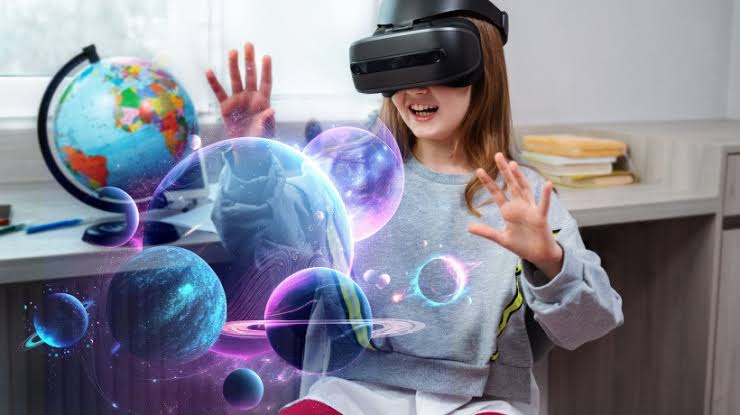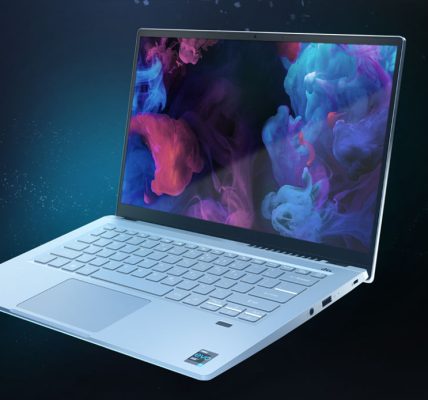-
Table of Contents
“AR and VR Integration: Bridging Realities for Limitless Experiences”
AR and VR integration refers to the merging of augmented reality (AR) and virtual reality (VR) technologies, blurring the lines between the physical and virtual worlds. This integration allows users to experience a combination of real-world elements and computer-generated content, enhancing their perception and interaction with the environment. By seamlessly blending digital information with the physical world, AR and VR integration opens up new possibilities in various fields, including gaming, education, healthcare, architecture, and more.
The Impact of AR and VR Integration on Gaming Experiences
The integration of augmented reality (AR) and virtual reality (VR) technologies has had a profound impact on various industries, and one area where this integration has been particularly transformative is in the realm of gaming experiences. AR and VR have revolutionized the way we interact with virtual worlds, blurring the lines between the physical and the virtual.
One of the most significant impacts of AR and VR integration on gaming experiences is the level of immersion it offers. With the help of these technologies, gamers can now step into a virtual world and feel like they are a part of it. Whether it’s exploring a fantasy realm or engaging in a high-octane action sequence, the level of immersion provided by AR and VR is unparalleled. This heightened sense of immersion not only enhances the overall gaming experience but also allows players to feel a deeper connection with the virtual world.
Another way in which AR and VR integration has transformed gaming experiences is by introducing a new level of interactivity. Traditional gaming experiences often involve using a controller or keyboard to navigate through a virtual world. However, with the integration of AR and VR, players can now use their own bodies to interact with the virtual environment. This means that gamers can physically move around, gesture, and even use their voices to control the game. This level of interactivity adds a whole new dimension to gaming, making it a more engaging and dynamic experience.
Furthermore, AR and VR integration has also opened up new possibilities for multiplayer gaming experiences. In the past, multiplayer gaming often meant sitting in front of a screen and playing with friends who were physically present. However, with the advent of AR and VR, multiplayer gaming has taken on a whole new meaning. Players can now connect with others from around the world and interact with them in a virtual space. This not only allows for more diverse and inclusive gaming communities but also fosters a sense of camaraderie and collaboration among players.
In addition to enhancing immersion, interactivity, and multiplayer experiences, AR and VR integration has also revolutionized the way games are designed and developed. Game developers now have the ability to create virtual worlds that seamlessly blend with the physical environment. This means that gamers can explore their own neighborhoods or familiar places in a completely new and exciting way. Whether it’s battling virtual creatures in their own backyard or solving puzzles in their living room, the integration of AR and VR has made gaming experiences more personalized and tailored to individual players.
In conclusion, the integration of AR and VR technologies has had a profound impact on gaming experiences. It has enhanced immersion, introduced a new level of interactivity, opened up new possibilities for multiplayer gaming, and revolutionized game design and development. As these technologies continue to evolve, we can expect even more innovative and immersive gaming experiences in the future. The lines between the physical and virtual worlds are becoming increasingly blurred, and the possibilities for gaming are endless.
Exploring the Potential of AR and VR Integration in Education
Augmented reality (AR) and virtual reality (VR) have become increasingly popular in recent years, with applications ranging from gaming to healthcare. However, one area where the potential of AR and VR integration is just beginning to be explored is education. By blurring the lines between the physical and virtual worlds, AR and VR have the power to revolutionize the way we teach and learn.
One of the main advantages of AR and VR integration in education is the ability to create immersive learning experiences. With AR, students can overlay digital information onto the real world, allowing them to interact with virtual objects and explore complex concepts in a hands-on way. For example, students studying biology can use AR to examine 3D models of cells or dissect virtual organisms, enhancing their understanding of the subject matter.
Similarly, VR can transport students to virtual environments that would otherwise be inaccessible. For instance, history students can visit ancient civilizations or witness historical events firsthand, providing a more engaging and memorable learning experience. By immersing students in these virtual worlds, AR and VR integration can foster a deeper understanding and appreciation for the subject matter.
Another benefit of AR and VR integration in education is the ability to personalize learning experiences. With AR and VR, educators can tailor content to meet the individual needs and learning styles of each student. For example, students who are visual learners can benefit from interactive visualizations and simulations, while auditory learners can engage with audio-based content. This personalized approach to learning can help students grasp difficult concepts more easily and improve overall academic performance.
Furthermore, AR and VR integration can enhance collaboration and communication among students. With AR, students can work together on virtual projects, regardless of their physical location. For example, a group of students from different parts of the world can collaborate on a virtual science experiment, sharing ideas and insights in real-time. This not only promotes teamwork and problem-solving skills but also prepares students for the increasingly globalized and interconnected world.
In addition to these benefits, AR and VR integration in education can also address the limitations of traditional teaching methods. For example, in subjects like physics or chemistry, where experiments can be dangerous or expensive, AR and VR can provide a safe and cost-effective alternative. Students can conduct virtual experiments, make mistakes, and learn from them without any real-world consequences. This not only ensures student safety but also allows for more experimentation and exploration, leading to a deeper understanding of the subject matter.
Despite the numerous advantages, there are also challenges to overcome when integrating AR and VR into education. One of the main challenges is the cost of implementing these technologies. AR and VR hardware can be expensive, making it difficult for schools with limited budgets to adopt them. Additionally, there is a learning curve for both educators and students in using these technologies effectively. Training and support are crucial to ensure that educators can leverage the full potential of AR and VR in the classroom.
In conclusion, the integration of AR and VR in education has the potential to revolutionize the way we teach and learn. By creating immersive learning experiences, personalizing content, promoting collaboration, and addressing the limitations of traditional teaching methods, AR and VR can enhance student engagement and understanding. However, it is important to address the challenges of cost and training to ensure that all students have access to these transformative technologies. As AR and VR continue to evolve, the lines between the physical and virtual worlds will continue to blur, opening up new possibilities for education.
How AR and VR Integration is Revolutionizing the Retail Industry
AR and VR Integration: Blurring the Lines Between Physical and Virtual
How AR and VR Integration is Revolutionizing the Retail Industry
The retail industry has always been at the forefront of innovation, constantly seeking new ways to enhance the customer experience. In recent years, the integration of augmented reality (AR) and virtual reality (VR) technologies has emerged as a game-changer, revolutionizing the way consumers interact with products and brands.
AR and VR integration in the retail industry has opened up a world of possibilities, blurring the lines between physical and virtual shopping experiences. With AR, customers can now try on clothes virtually, visualize furniture in their homes, or even test out makeup without physically touching a product. VR, on the other hand, allows customers to immerse themselves in a virtual store, explore products in a 360-degree environment, and even take virtual tours of real-world locations.
One of the key advantages of AR and VR integration in retail is the ability to provide customers with a more personalized and interactive shopping experience. By leveraging these technologies, retailers can create virtual showrooms where customers can browse and interact with products in a way that feels almost as real as being in a physical store. This not only enhances the overall shopping experience but also helps customers make more informed purchasing decisions.
Moreover, AR and VR integration in retail has the potential to bridge the gap between online and offline shopping. With the rise of e-commerce, many customers have become accustomed to the convenience of shopping from the comfort of their homes. However, the lack of physical interaction with products has often been a drawback. By incorporating AR and VR technologies, retailers can now offer customers the best of both worlds – the convenience of online shopping combined with the immersive experience of a physical store.
Another significant benefit of AR and VR integration in retail is the ability to overcome space limitations. Traditional brick-and-mortar stores are often constrained by physical space, limiting the range of products they can offer. With AR and VR, retailers can showcase their entire product catalog in a virtual environment, eliminating the need for physical inventory. This not only reduces costs but also allows retailers to offer a wider variety of products to their customers.
Furthermore, AR and VR integration in retail has the potential to revolutionize the way customers interact with brands. By creating immersive and interactive experiences, retailers can build stronger emotional connections with their customers. For example, a clothing brand could use AR to allow customers to virtually try on outfits and share their looks on social media, creating a sense of community and engagement. This not only increases brand loyalty but also generates valuable user-generated content that can be leveraged for marketing purposes.
In conclusion, the integration of AR and VR technologies in the retail industry is transforming the way customers shop and interact with brands. By blurring the lines between physical and virtual experiences, retailers can provide customers with personalized, interactive, and immersive shopping experiences. From virtual showrooms to bridging the gap between online and offline shopping, AR and VR integration offer numerous benefits for both retailers and customers. As technology continues to advance, it is clear that AR and VR will play an increasingly important role in shaping the future of retail.In conclusion, the integration of augmented reality (AR) and virtual reality (VR) technologies is blurring the lines between the physical and virtual worlds. This integration has the potential to revolutionize various industries, including gaming, education, healthcare, and retail. By seamlessly merging digital content with the real world, AR and VR offer immersive experiences that enhance productivity, learning, and entertainment. As these technologies continue to advance, we can expect to see even greater integration and innovation, transforming the way we interact with and perceive our surroundings.





